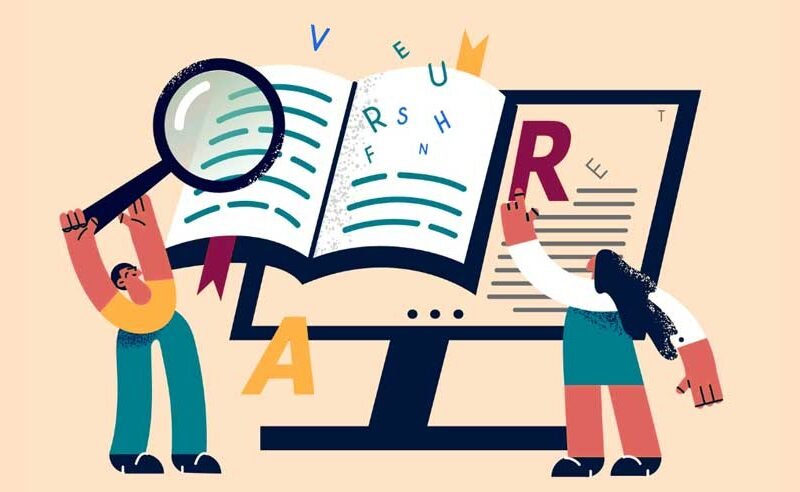English helping verbs are essential tools in the world of grammar. They shape the meaning of sentences and enhance the clarity of communication. Understanding their role can significantly improve your writing and speaking skills.
What Are Helping Verbs?
Helping verbs, also known as auxiliary verbs, assist the main verb in a sentence. They add nuance to the meaning, indicate tense, mood, and voice. Common helping verbs include forms of “to be,” “to have,” and “to do.” Modal auxiliary verbs like “can,” “will,” “must,” and “should” also play a crucial role.
The Importance of Helping Verbs
Mastering helping verbs can transform your ability to express ideas. They help form complex verb phrases, such as perfect and continuous tenses, and convey subtleties in meaning. Examples of helping verbs in action include:
- I am running.
- She has eaten.
- They will arrive.
These sentences demonstrate how helping verbs modify the main verb to indicate ongoing actions, completed actions, or future events.
Modal Auxiliary Verbs: Adding Depth
Modal auxiliary verbs express necessity, possibility, permission, and ability. They are key to adding depth to your sentences. For instance:
- You must finish your work.
- She might join us for dinner tonight.
- Can you help me with this task?
These examples show how modal verbs change the meaning and tone of the sentences.
Tenses and Verb Phrases
Helping verbs are vital in forming different tenses. They combine with main verbs to create perfect tenses, continuous tenses, and perfect continuous tenses. Here are some tense examples:
- Present perfect tense: She has gone.
- Past continuous tense: They were studying.
- Future perfect continuous tense: I will have been working.
Understanding verb phrases and their formation is crucial for mastering verb tenses.
Passive Voice and Helping Verbs
Helping verbs are essential in constructing the passive voice. The passive voice emphasizes the action rather than the subject. For example:
- The cake was baked by John.
- The project is being reviewed by the team.
Using helping verbs effectively in passive voice sentences can make your writing more versatile and engaging.
Common Helping Verbs and Their Uses
Some of the most common helping verbs include “am,” “is,” “are,” “was,” “were,” “have,” “has,” “had,” “do,” “does,” and “did.” Each serves a specific purpose in verb phrases. Here are some examples of helping verbs in sentences:
- I am feeling nervous about the exam.
- She has been serving dinner since 7 PM.
- They did finish the project on time.
Familiarity with these helping verbs and their uses can significantly enhance your grammatical accuracy.
Enhancing Sentences with Helping Verbs
Helping verbs can make your sentences more dynamic and precise. They allow you to express ongoing actions, future plans, and hypothetical scenarios. Consider these examples:
- We are planning a party tomorrow.
- He will be giving the presidential address.
- They might have left by the time we arrive.
These sentences illustrate how helping verbs provide context and clarity.
Perfect Tenses and Helping Verbs
Perfect tenses indicate actions that are completed at a certain point in time. They use helping verbs to connect the action to the present, past, or future. For example:
- Present perfect tense: I have finished my homework.
- Past perfect tense: She had left before the event started.
- Future perfect tense: By this time tomorrow, I will have completed the project.
Understanding perfect tenses is essential for conveying the timing of actions accurately.
Progressive Tenses and Helping Verbs
Progressive tenses emphasize ongoing actions. They use helping verbs to highlight the continuity of the action. For example:
- Present progressive tense: I am reading a book.
- Past progressive tense: They were discussing the plan.
- Future progressive tense: We will be traveling next week.
Mastering progressive tenses helps you describe actions that are in progress.
Negative Statements and Helping Verbs
Helping verbs are also used to form negative statements. They provide clarity and precision. For example:
- She does not like broccoli.
- They have not arrived yet.
- He will not attend the meeting.
Using helping verbs in negative statements ensures your sentences are clear and direct.
Final Thoughts
Understanding English helping verbs is crucial for mastering verb tenses, forming complex verb phrases, and expressing detailed meanings. They add depth and clarity to your writing and speaking. Remember, practice is key to using helping verbs effectively in your sentences. By mastering them, you can enhance your communication skills and express yourself more precisely.
Master the art of using English helping verbs, and watch your writing and speaking improve dramatically!
Frequently Asked Questions
What is an auxiliary verb?
An auxiliary verb, or helping verb, assists the main verb in a sentence to form a verb phrase.
How do helping verbs work in sentences?
Helping verbs combine with ordinary verbs to create different verb phrases, expressing various tenses and moods.
What are modal verbs and how are they used?
Modal verbs, a type of auxiliary verb, indicate ability, possibility, necessity, or permission in sentences.
Can you give examples of modal auxiliary verbs?
Examples of modal auxiliaries include “can,” “must,” and “should,” which modify the main verb to convey specific meanings.
How do perfect verb tenses function with helping verbs?
Perfect verb tenses use main helping verbs like “have” and “has” to indicate actions completed at different times.







